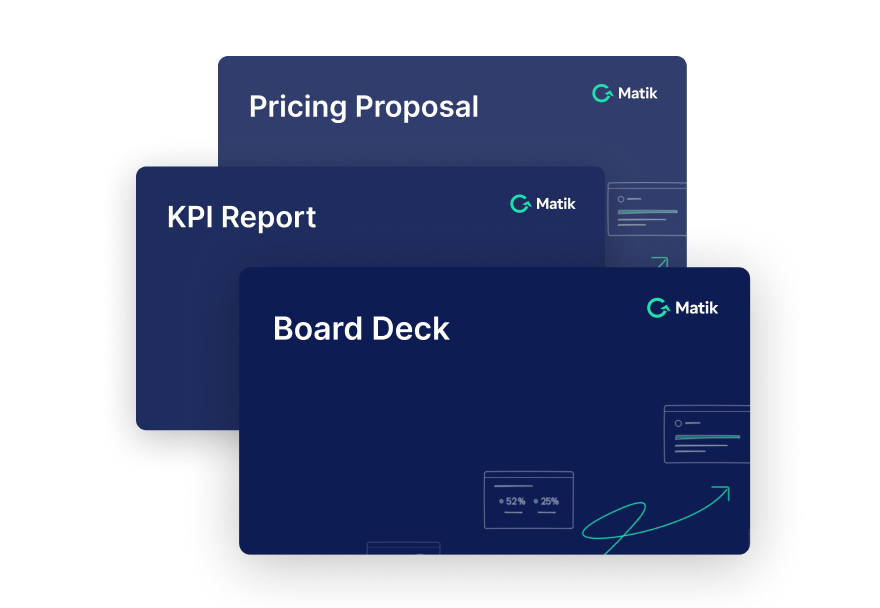Join Our Newsletter
In uncertain economic times, showcasing value to customers is essential for success. ROI only works when it ties together business drivers with business usage and adoption allows you to demonstrate how you are helping to achieve success goals and outcomes. The importance of telling a captivating ROI narrative is crucial. But how do you build a great ROI narrative?
The recipe for a great ROI story is simple:
Assumptions + Trust = ROI for Value Goals
Personalization is key. Any value-oriented conversation needs to be tailored to the needs and the goals of the customer you're working with.
Trust
Let’s start with trust. Trust is the underlying layer to any ROI story - if your customer doesn’t trust what you’re telling them, then nothing you say matters. There are three types of trust you need to build:
- Data-Driven Trust: Data-driven trust involves delivering data to customers at multiple touch points. This data builds competency and alignment, showcasing the transparency and trustworthiness of the relationship.
- Consultative Trust: Consultative trust involves providing recommendations and acting as an advisor to the customer. By sharing best practices and lessons learned from other customers, companies can establish themselves as knowledgeable and a committed partner.
- Compassionate Trust: Compassionate trust, often overlooked, focuses on showing care and empathy towards customers and their goals. Listening plays a crucial role in establishing compassionate trust.Taking the time to ask questions and actively listening to customer feedback shows that their opinions and needs are valued.
Value Goals
To demonstrate value to customers, it is important to understand their business goals and objectives.This can be done by engaging in conversations with customers, which can provide insight into what they are trying to achieve in their overall business. Once their goals are identified, it is essential to determine the success metrics that will measure their progress towards those goals.This will help in evaluating how well they are doing and what success looks like for them. Additionally, it is necessary to tie the capabilities of your tool or service back to the customer's business and their desired success. Creating a value map that outlines the customer's goals, objectives, capabilities, and success metrics will ensure a clear alignment between their business and your offering.
Taking an example from Salesforce, their value map demonstrates how they align their platform's capabilities with their customers' goals and objectives, resulting in optimized success. Personalizing value goals is crucial in making customers feel heard and understood. While there may be limitations due to the constant struggle between scale and personalization, it is important to collaborate with the champion or program manager at the customer's organization to ensure that the value goals truly reflect their aspirations.
Business Goals
Increase market share by 3% by driving increased revenue with existing customers
Improve CSAT to reduce attrition by 5%
Reduce costs 10% through productivity improvement
Business Objectives
Grow Personal Widgets sales by 5% through better quality leads
Grow Commercial Widgets sales 10% through sales excellence
Improve efficiency by holding costs flat while growing sales 10%
Salesforce Capabilities
360 view of customers
Analytics & insight on journeys/marketing
Lead/referral scoring
Pipeline and opportunity management
Next best offer
Embedded analytics & insights
Customer journeys with life events
Alerts to proactively respond to events
Customer knowledge and self-service
Integrated knowledge articles
Real-time dashboard and reports
Automation of manual tasks
Success Metrics
referrals (leads)
% conversion rate
$ sales per customer
$ total product sales
% win rate
% customer attrition rate
% first call resolution
average handle time
$ cross sell / up sell
$ sales per rep
new rep onboarding time
% sales rep attrition rate
Overall, building trust, understanding customer goals, and creating personalized value goals are key components of a successful ROI story
Assumptions & Customer Data
Assumptions should be based on personal experiences and working with customers. When discussing assumptions with a customer champion or advocate, it should be a collaborative partnership. Objections raised by the customer should not be seen as adversarial, but as an opportunity to align on the assumptions. For example, if assumptions about time savings are brought up in a conversation with the customer champion, and they mention that certain departments take more time to complete certain actions, this information should be incorporated to create a more comprehensive and grounded ROI argument. Having trust and a strong relationship with the customer champion allows for open and constructive conversations that enhance the ROI narrative.
First: Bring your initial take based on what you’ve seen.
Second: Use objections as the start of a conversation.
Third: Collaborate with your champion.
In order to have a complete ROI conversation, it is essential to have customer data that grounds the ROI metrics and statistics being communicated. This data can come from internal sources, such as adoption metrics and user results, or from qualitative feedback gathered through end user feedback sessions. Both types of data are important for effectively communicating ROI during business reviews with customers.
Additionally, tapping into the data that your customers have access to can greatly benefit ROI conversations. Examples of this include tying the value of your product to the business outcomes of the company, benchmarking performance against peers in the industry, or showcasing how certain users have achieved success with your product. Time-based accomplishments and goals achieved with the help of your product or service are also valuable data points.
—
With these insights we have found that a compelling narrative involves three key elements:
Trust - The importance of establishing this with customers through data-driven and consultative approaches as well as being compassionate and listening to feedback and validating their needs.
Value Goals - Understanding business goals and objectives are an integral part of establishing value to customers. Creating a value map that aligns business goals to your capabilities will optimize success and ensure customers are feeling heard and understood.
Assumptions and Customer Data - Collaboratively build assumptions based on customer experiences. Involving the customer champion is important to ensuring a comprehensive and grounded ROI argument is being established. Utilize objections as conversation starters and leverage customer data to ground ROI metrics and statistics.
By incorporating these elements, you can create personalized, trustworthy ROI stories that demonstrate value to stakeholders and will align with business goals.
---
See Matik in Action—Request a Demo















